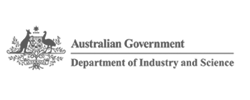Abbott is three times wrong to threaten the clean energy fund
Posted by admin on 29/05/2013 at 7:02 amAbbott is four times wrong to threaten the clean energy fund
Tony Abbott’s stated intention to disband the Clean Energy Finance Corporation, and his warning that he would “tear up” any contracts it enters into, is both troubling and illogical.
The CEFC’s very existence is entirely consistent with Abbott’s ‘direct action’ policy of picking winners rather than allowing the free market to pick its own winners. Further, his entreaty to the Corporation not to carry out its charter prior to September 14 is erroneous and unconstitutional. There is no sovereign risk if due process is followed. Moreover, the CEFC is playing a very important role in assisting a speedy and painless transition to a low carbon economy.
Labor long ago abandoned any pretense of being a true socialist party, and anybody who criticises it for economic mismanagement on that basis is probably motivated by ideology rather than observation. This is not to defend Labor’s every move, but Wayne Swan’s handling of fiscal and monetary policy since 2008 have helped protect Australia from the worst of the GFC – a fact not lost on either John Howard or Peter Costello, neither of whom have criticised the principal of Swan’s management, only aspects of the fine tuning. Labor’s history of embracing the free market dates back to Keating, who, for all his failings of arrogance and playing the man not the ball, was a much needed macro-economic reformer.
So it is not surprising that it was Labor who created the CEFC as a boost to the free market’s ability to pick its own winners within a cap-and-trade framework, in the development and commercialisation of low-carbon energy technologies. The carbon tax, as the ETS’s introductory act, may be a politically driven blunt instrument, but its days are numbered before the ETS kicks in. A true free market policy would ‘axe the tax’ as a means of bringing forward the ETS’.
The Abbott-Hockey ‘Direct Action’ policy is itself surprising. This is classic arbitrary market interference, where the government attempts to pick winners rather than allowing the market to do so. That is rather un-Liberal in its philosophy. It also harks back to the early days of governments’ climate change mitigation policies, such as some of the Howard-era Australian Greenhouse Office’s programs, and the NSW Sustainable Energy Development Authority. That is not a criticism of either body, both of which did some truly great and ground-breaking work, introducing effective policies and programs where there had hitherto been absolutely nothing. Some of these are ongoing, and still bearing fruit, especially in the building industry. But I make the point that the whole policy platform has evolved since then, broadened to include almost every sphere of government, with the private sectors now increasingly engaged. But direct action as outlined by Mr Abbott devolves, even destroys, what has become a sophisticated and increasingly effective complex mechanism.
Having said that, it is somewhat ironic that the CEFC is also consistent with direct action, if indeed that is what we end up with after the election. If an Abbott government and its advisors intend to pick winners, an investment body of some kind will be required to shower public money on the chosen few. Why not use the CEFC?
The problem with the Abbott-Hockey warning to the CEFC on sovereign risk is that statutory bodies & government departments are legally and constitutionally bound to carry out their charter or ministerial instruction until Parliament dissolved and an election called. Gillard’s nomination of September 14 as the date for the election does not constitute calling that election, it is no different to governments operating on fixed terms. It is the dissolution of Parliament that triggers the caretaker mode, during which Abbott’s warning would indeed be valid. Until that time, the CEFC is legally and constitutionally bound to carry out its charter – it simply cannot do otherwise, no matter how certain Abbott’s victory may seem. The correct course of action for a mature government that wants to change policy is to honour whatever contracts may be in place, but to write no new ones. Talk of “tearing up” contracts smacks of teenage tantrums and is not befitting of a potential Prime Minister.
Indeed it is extremely mischievous of an Opposition leader to make such bald threats to a corporation established under proper authority, carrying out its proper work. His reasoning, that contracts entered into will increase Australia’s sovereign risk are disingenuous. A far more serious threat to sovereign risk comes from threats to destabilise solid economic investment in future-proofing the economy.
The CEFC is an important tool in the kit we need to progress to a low carbon economy. It is not there to inject funds into basket case blue-sky start-ups. Its function is to provide capital to companies with a proven track record or sound business model, to enable technologies to become commercialized. This is needed because the established energy paradigm is rusted onto the Australian economy with over $10bn in subsidies and tax beaks[1] ($1.9 trillion globally)[2] that give the fossil energy sources a massive head start. It is unreasonable and illogical to expect emerging clean technologies to be able to outcompete with these from the word go – they need a leg up to begin with.
The adoption and integration of clean energy in building design has proven to be greatly beneficial to the ongoing cost of running such buildings. In the small scale residential sector, rooftop solar power will soon reach grid parity with coal, and in medium sized developments has already done so. No leg-up is needed there, but twenty years ago it was. So it will be with emerging technologies such as thin-film PV veneers, wave energy, and solar cooling systems: with early funding they will be cost competitive within ten to twenty years.
The chair of the CEFC, Reserve Bank board member Jillian Broadbent, told ABC News she is disappointed with the Liberal-National plans: “There’s a lot of confusion about what we are and what the working model is and what kind of costs we’re going to be to the taxpayer, because on our numbers we’re going to be financially self-sufficient in probably within the first two years of our operation,” she said.
“Then you start generating dividends which go to the Australian Renewable Energy Agency which can save the government putting funds into that agency directly.”
The fund is currently considering applicants from at least 50 low carbon and low emission companies with contracts worth up to $2 billion. There is a compelling case to maintain the Clean Energy Finance Corporation on several very different grounds, and the Liberal-National Coalition should reconsider Tony Abbott’s reckless policy and cavalier attitude to it.
[1] ACF 2011, and ISF 2007.
[2] IMF 2013.
See also http://econews.com.au/news-to-sustain-our-world/cefc-and-lib-nat-set-collision-course/
Sustainable House Design
We will help you create a family home that works well, feels good, is kind to the environment, culturally appropriate and reduces your energy and running costs.
Read MoreSustainable Commercial Buildings
We design your building to help reduce your operating costs, optimize the life cycle of your building, increase your property value and increase employee productivity.
Read MoreWorking with Envirotecture
We design beautiful, sustainable buildings that work for you, your family or your business. Full range of building design, consulting and training services.
Read More






















